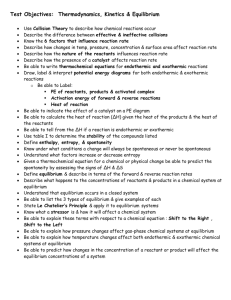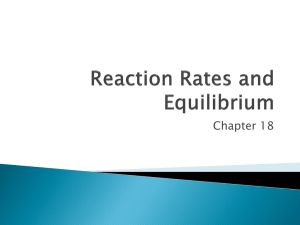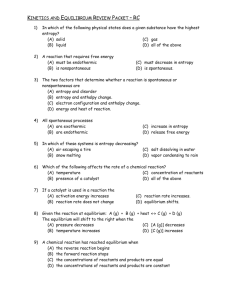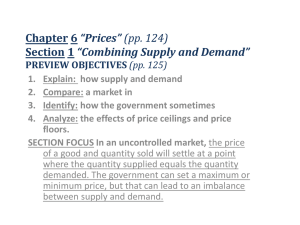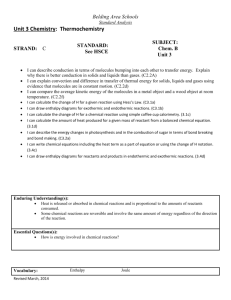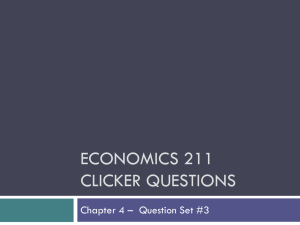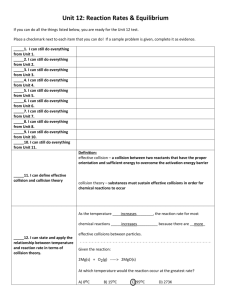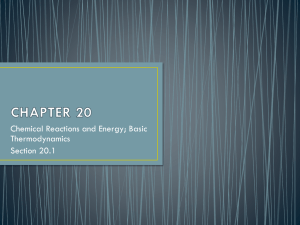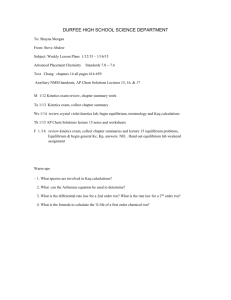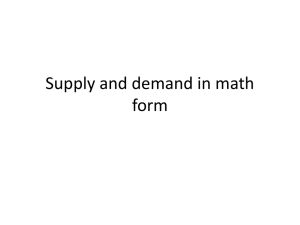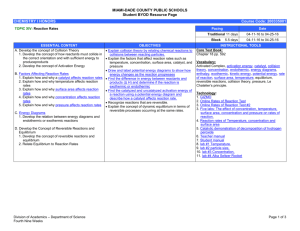Unit 13: Kinetics, Thermodynamics, & Equilibrium
advertisement
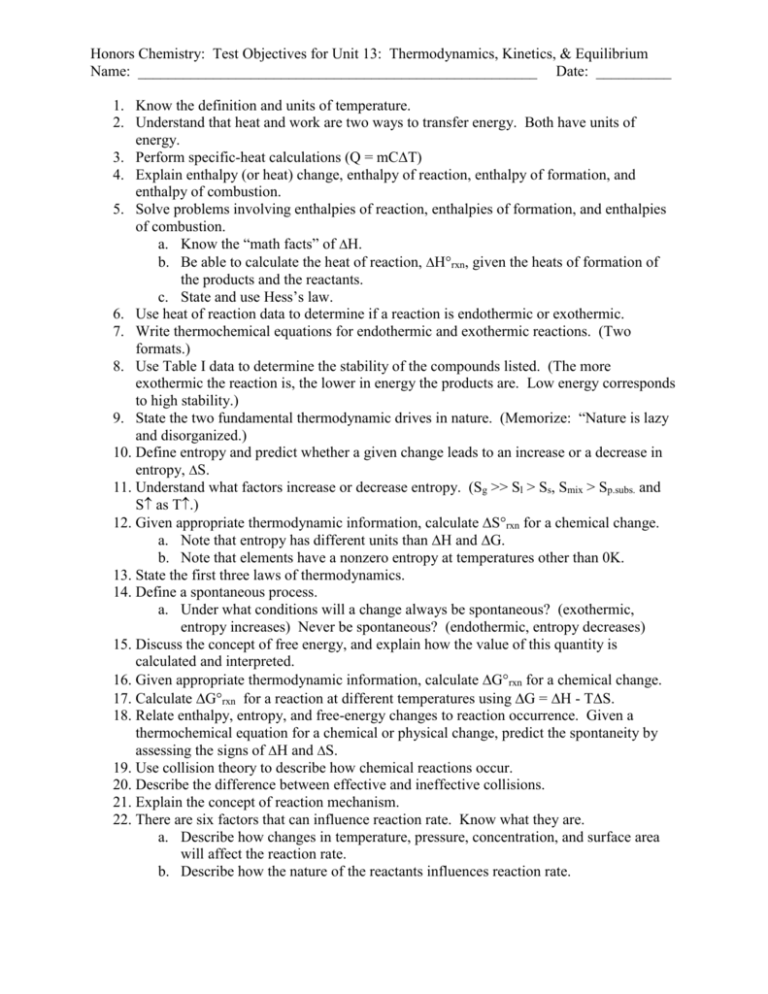
Honors Chemistry: Test Objectives for Unit 13: Thermodynamics, Kinetics, & Equilibrium Name: _____________________________________________________ Date: __________ 1. Know the definition and units of temperature. 2. Understand that heat and work are two ways to transfer energy. Both have units of energy. 3. Perform specific-heat calculations (Q = mC∆T) 4. Explain enthalpy (or heat) change, enthalpy of reaction, enthalpy of formation, and enthalpy of combustion. 5. Solve problems involving enthalpies of reaction, enthalpies of formation, and enthalpies of combustion. a. Know the “math facts” of H. b. Be able to calculate the heat of reaction, Hrxn, given the heats of formation of the products and the reactants. c. State and use Hess’s law. 6. Use heat of reaction data to determine if a reaction is endothermic or exothermic. 7. Write thermochemical equations for endothermic and exothermic reactions. (Two formats.) 8. Use Table I data to determine the stability of the compounds listed. (The more exothermic the reaction is, the lower in energy the products are. Low energy corresponds to high stability.) 9. State the two fundamental thermodynamic drives in nature. (Memorize: “Nature is lazy and disorganized.) 10. Define entropy and predict whether a given change leads to an increase or a decrease in entropy, S. 11. Understand what factors increase or decrease entropy. (Sg >> Sl > Ss, Smix > Sp.subs. and S as T.) 12. Given appropriate thermodynamic information, calculate Srxn for a chemical change. a. Note that entropy has different units than ∆H and ∆G. b. Note that elements have a nonzero entropy at temperatures other than 0K. 13. State the first three laws of thermodynamics. 14. Define a spontaneous process. a. Under what conditions will a change always be spontaneous? (exothermic, entropy increases) Never be spontaneous? (endothermic, entropy decreases) 15. Discuss the concept of free energy, and explain how the value of this quantity is calculated and interpreted. 16. Given appropriate thermodynamic information, calculate Grxn for a chemical change. 17. Calculate Grxn for a reaction at different temperatures using ∆G = ∆H - T∆S. 18. Relate enthalpy, entropy, and free-energy changes to reaction occurrence. Given a thermochemical equation for a chemical or physical change, predict the spontaneity by assessing the signs of H and S. 19. Use collision theory to describe how chemical reactions occur. 20. Describe the difference between effective and ineffective collisions. 21. Explain the concept of reaction mechanism. 22. There are six factors that can influence reaction rate. Know what they are. a. Describe how changes in temperature, pressure, concentration, and surface area will affect the reaction rate. b. Describe how the nature of the reactants influences reaction rate. c. Describe what a catalyst is and how the presence of a catalyst affects reaction rate. Know two different types of catalyst. 23. Define activated complex. 24. Draw, label, and interpret potential energy diagrams for both endothermic and exothermic reactions. Label potential energies of reactants, activated complex, and products, the activation energy of the forward and reverse reactions and the heat of reaction. 25. Indicate the effect of a catalyst on a potential energy diagram. 26. Explain and write rate laws for chemical reactions, given appropriate experimental information. 27. Relate the order of a reaction to the rate law for the reaction. 28. Define equilibrium and describe equilibrium in terms of the forward and reverse reaction rates. (Rate forward = rate reverse.) 29. Identify equations representing phase equilibria, solution equilibria, and chemical equilibria. a. Ice and water exist in equilibrium at 0C or 273K. b. Steam and water exist in equilibrium at one atmosphere at 100C or 373K. 30. Understand that equilibrium occurs in closed systems. Reactions which result in the formation of a solid precipitate, a gas, or water will NOT reach equilibrium. Such reactions are said to GO TO COMPLETION. 31. Describe what happens to the concentrations of reactants and products in a chemical system at equilibrium. (The concentrations are constant.) 32. Explain the nature of the equilibrium constant. 33. Write chemical equilibrium expressions and carry out calculations involving them. 34. State LeChatelier’s principle and apply it to equilibrium systems. 35. Know three stressors for a chemical system. 36. Explain the terms, “Shift to the right” and “Shift to the left” with respect to a chemical equation. a. Explain how pressure changes, resulting from volume changes, affect gas-phase chemical systems at equilibrium. b. Explain how temperature changes affect endothermic and exothermic chemical systems at equilibrium. c. Predict how changes in the concentration of a reactant or product will affect the equilibrium concentrations of a system. i. Explain the common-ion effect. 37. Predict stresses that will produce a desired outcome for a chemical process. 38. Know the easiest way to identify an equilibrium equation. 39. Be able to tell the difference between an equilibrium problem and a stoichiometry problem. 40. Explain the term solubility product constant, Ksp, and calculate it, given appropriate information. 41. Calculate solubilities, given Ksp’s. 42. Carry out calculations to predict whether precipitates will form when solutions are combined.
